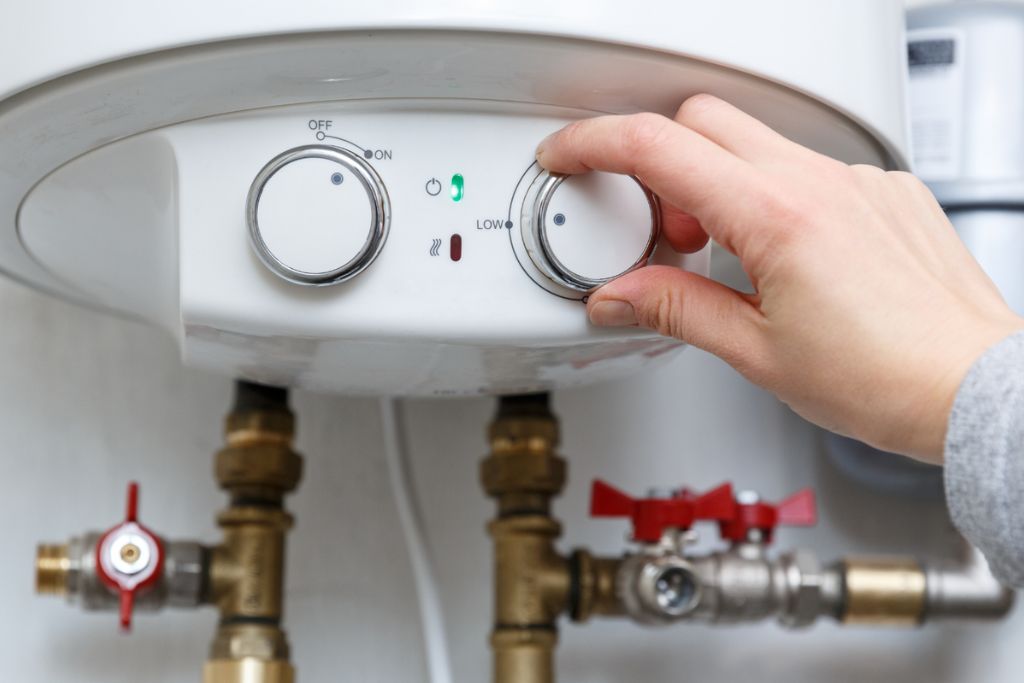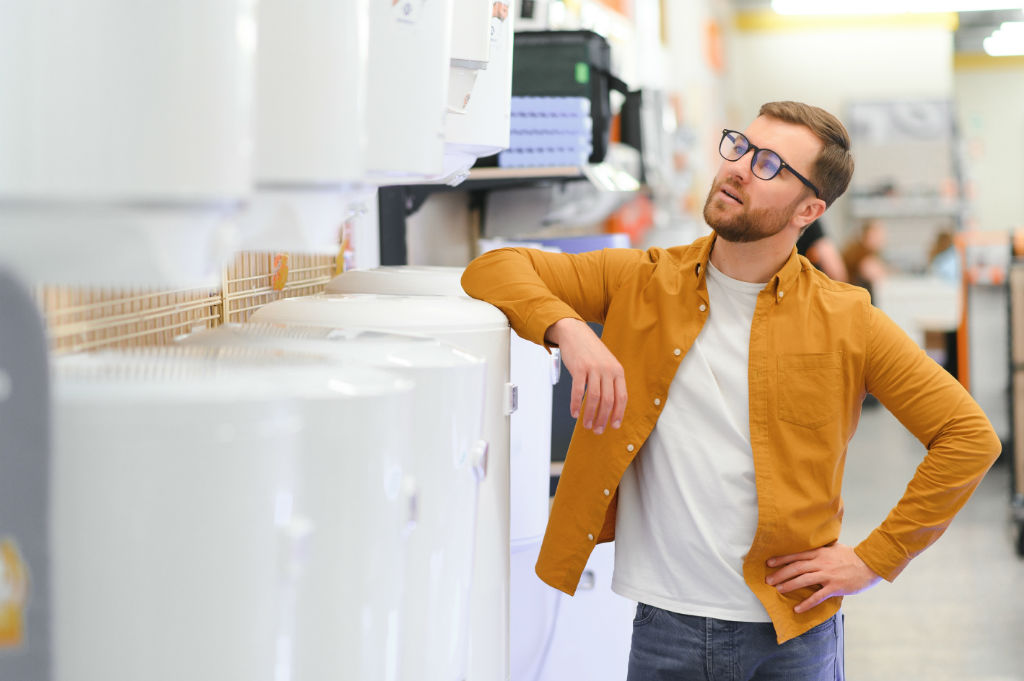Are you standing at the kitchen sink, waiting for the water to warm up, and wondering if your hot water system is on the blink? Or has it always been this slow? Maybe you’re shopping for a new system and want one that delivers hot water fast. Either way, how long does a hot water system take to heat up is a question on many homeowners’ minds.
From gas and electric storage tanks to instantaneous units, heat pumps, and solar systems, heating times vary based on:
- Hot water system type
- Hot water size
- Condition, & much more.
If you’re worried your system is taking far too long, or just curious about which option heats up quickest for those cold mornings in your birthday suit, this guide is for you. Let’s explore what affects heating times and whether it’s time to troubleshoot or upgrade with Link Plumbing in Sydney.
What impacts hot water heating time?
Before diving into specific systems, let’s unpack why heating times differ at all. Factors like system capacity, energy source, water starting temperature, and insulation all play a role. Our warm climate helps, as that cold incoming water is typically already 15- 20°C, but hard water or aging systems can slow things down.
If you’re asking how long does hot water system take to heat up because you’re waiting ages every single time you want hot water, it might signal a fault like a broken thermostat or sediment build-up. For hot water system shoppers, knowing how long does it take for hot water to heat up can guide you to a system that fits your lifestyle – whether you need instant hot water or can wait for a tank to warm up.
Heating times by system type
Here’s a breakdown of how long each major hot water system type takes to heat up. Whether you’re troubleshooting a sluggish system or comparing options, these insights will definitely help:
1. Gas storage tank systems
Gas storage tanks, common across Sydney but also all across Australia and beyond, store 90-170 litres of water heated by a gas burner. So, how long does a gas water heater take to heat up?
Typically, a 135L tank takes 30-45 minutes to heat water from 20°C to 60°C, assuming a healthy system. Recovery time (reheating after use) is similar but faster if only partially depleted.
BE AWARE: Slow heating might indicate a faulty burner or sediment, especially in older units.
2. Electric storage tank systems
Electric storage tanks (25-400L) use a heating element to warm water. How long does it take for an electric hot water tank to heat up?
A 125L tank takes about 2-3 hours to reach 60°C from 20°C, while smaller 50L units may take 1- 1.5 hours. How long does a electric hot water system take to heat up can depend on element wattage (eg. 3.6kW vs. 1.8kW) and insulation.
BE AWARE: If your tank’s taking longer, check the thermostat or element for faults.
3. Instantaneous gas systems
Instantaneous gas systems, or tankless units, heat water on demand. How long does it take for hot water to heat up with these?
Answer: Virtually instantly – within 5-10 seconds of opening the tap, water reaches 50-60°C, helped by Sydney’s warm water feed.
BE AWARE: Gas instant hot water system keeps turning off, or is it particularly slow to heat? That could point to low gas pressure or a clogged heat exchanger, requiring professional attention.
4. Instantaneous electric systems
Electric instantaneous systems also deliver hot water in 5-10 seconds, meaning you’ll never think ‘how long does a hot water tank take to heat up’ – because there’s no tank at all, just a powerful heating coil.
BE AWARE: Slow delivery might mean a faulty coil or insufficient power supply, especially in homes with older wiring.
5. Heat pump systems
Heat pump hot water units use electricity to transfer heat from the air, making them efficient … but slower.
For a heat pump, how long does hot water tank take to heat up if it’s an average 200L size? Expect 3-5 hours to heat from 20°C to 60°C, depending on ambient temperature. In Sydney’s mild climate, they perform well, but cold snaps below 5°C can slow them down.
BE AWARE: A sluggish heat pump might have a compressor issue or need refrigerant top-up.
6. Solar hot water systems
Solar hot water systems with electric or gas boosters are eco-friendly, but depend on sunlight. How long does it take for a hot water tank to heat up from cold if powered by the sun?
A 300L solar tank takes 4-6 hours to heat fully via solar panels, but the electric booster can cut this to 2-3 hours in cloudy Sydney weather.
BE AWARE: Slow heating might indicate a booster failure or dirty panels, which reduce efficiency.
Troubleshooting slow heating times
System definitely taking too long? It might not be just be its type. Here’s how to investigate:
Check Power/Gas Supply: Ensure gas valves are open or breakers aren’t tripped. Low gas pressure or power issues can slow heating.
Inspect Thermostats/Burners: Faulty thermostats (electric/solar) or burners (gas) can delay heating. Verify settings are at 50-60°C.
Look for Sediment or Scale: Hard water in Sydney can clog tanks, heat exchangers, or coils, slowing performance. Flushing may be needed.
Assess System Size: A small tank or underpowered instant unit might not keep up with demand, especially in large households.
Check System Age: Systems over 10-15 years old lose efficiency due to wear, corrosion, or outdated technology.
Did those checks resolve the issue? Or are you noticing:
- Leaks?
- Strange noises?
- Error codes?
If so, the time has come to call a professional – because slow heating often signals a need for maintenance or replacement, especially for older systems.
Choosing a system for speed
For those shopping for a new system, instantaneous or continuous flow technology – either gas or electric – is the fastest, delivering hot water in seconds, which is perfect for busy Sydney households. Gas storage tanks are quicker than electric for larger families, while heat pumps and solar systems trade a bit of speed for impressive efficiency. Consider your household size, budget, and energy priorities when choosing – and we’d always be happy to help make the right decision for your circumstances.
Link Plumbing – Your hot water experts
Troubleshooting a sluggish system? Or shopping for a faster one? Either way, Link Plumbing has you covered.
Our Sydney-based team specialises in diagnosing and repairing all hot water systems – from tanks to instant units, heat pumps, and solar. We’ll ensure your system heats up efficiently or help you choose the perfect upgrade. Don’t wait for hot water a second longer than you have to – contact the friendly team at Link Plumbing today for expert service!

 0412 056 027
0412 056 027 

